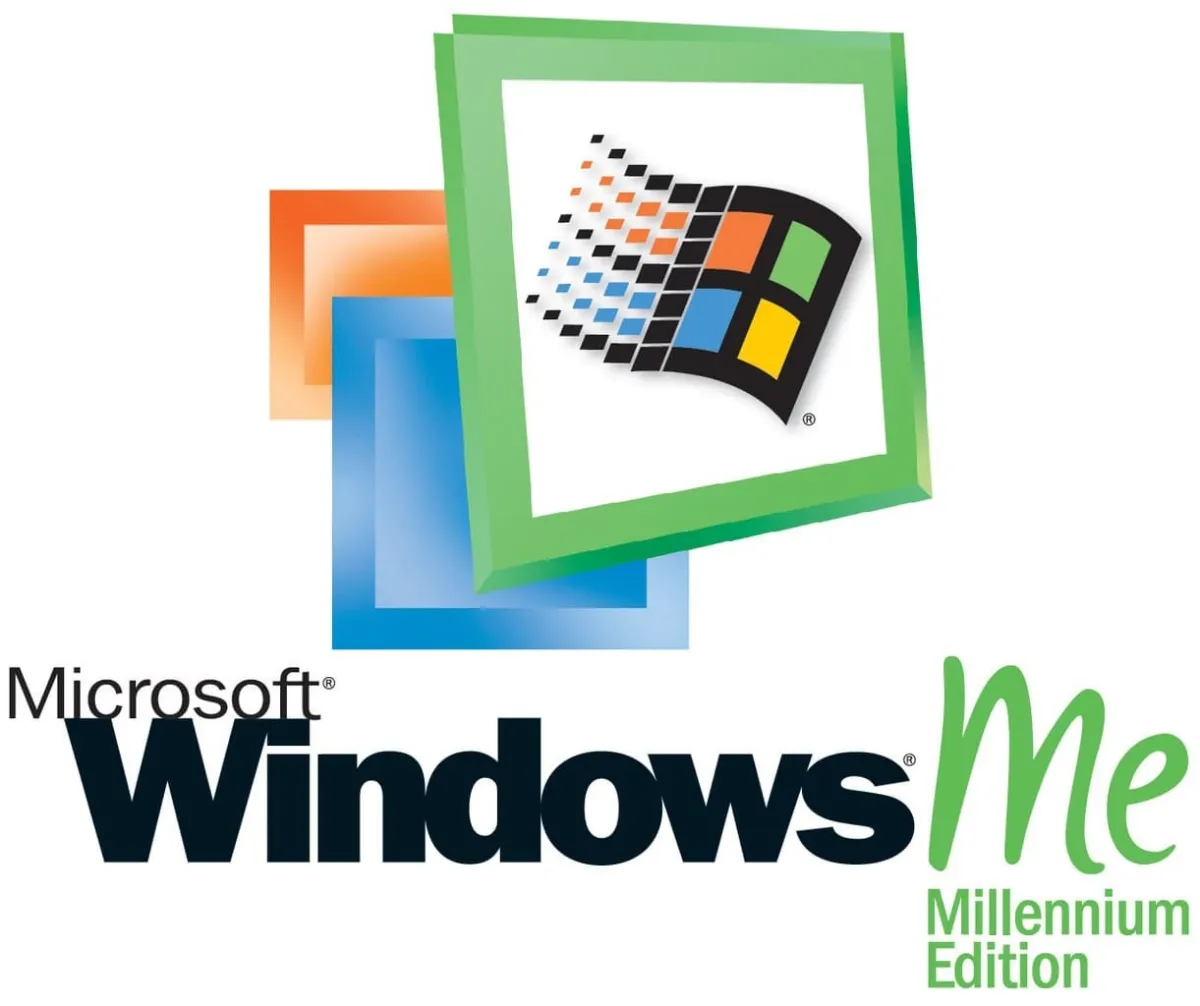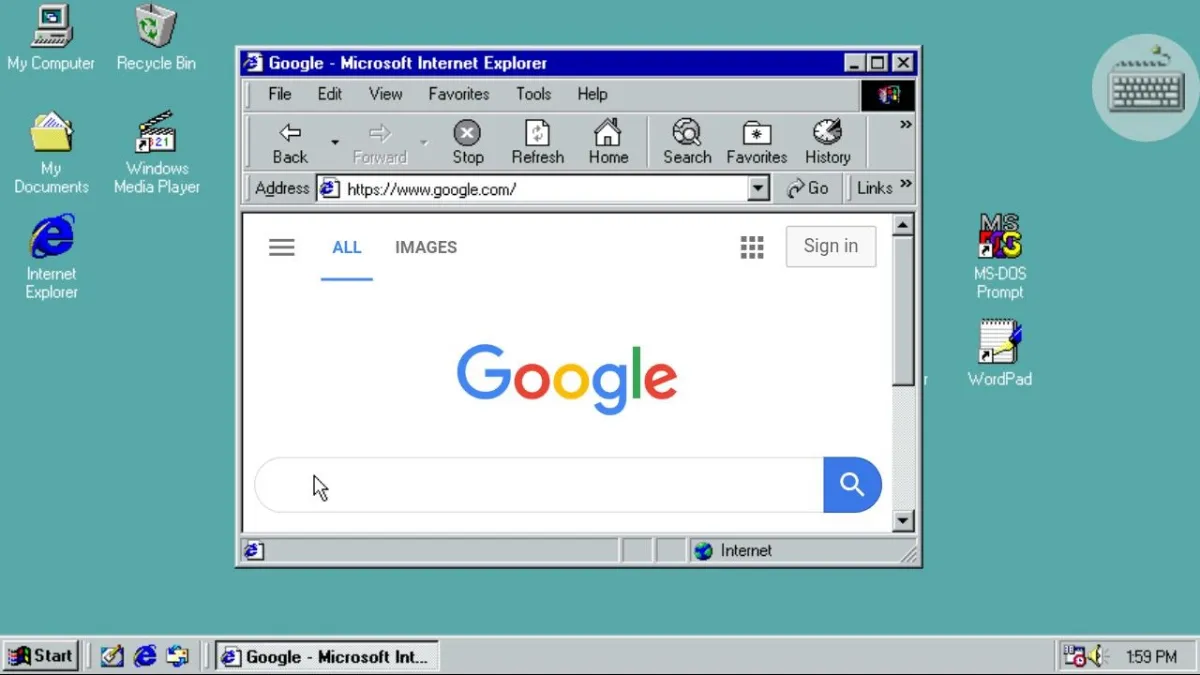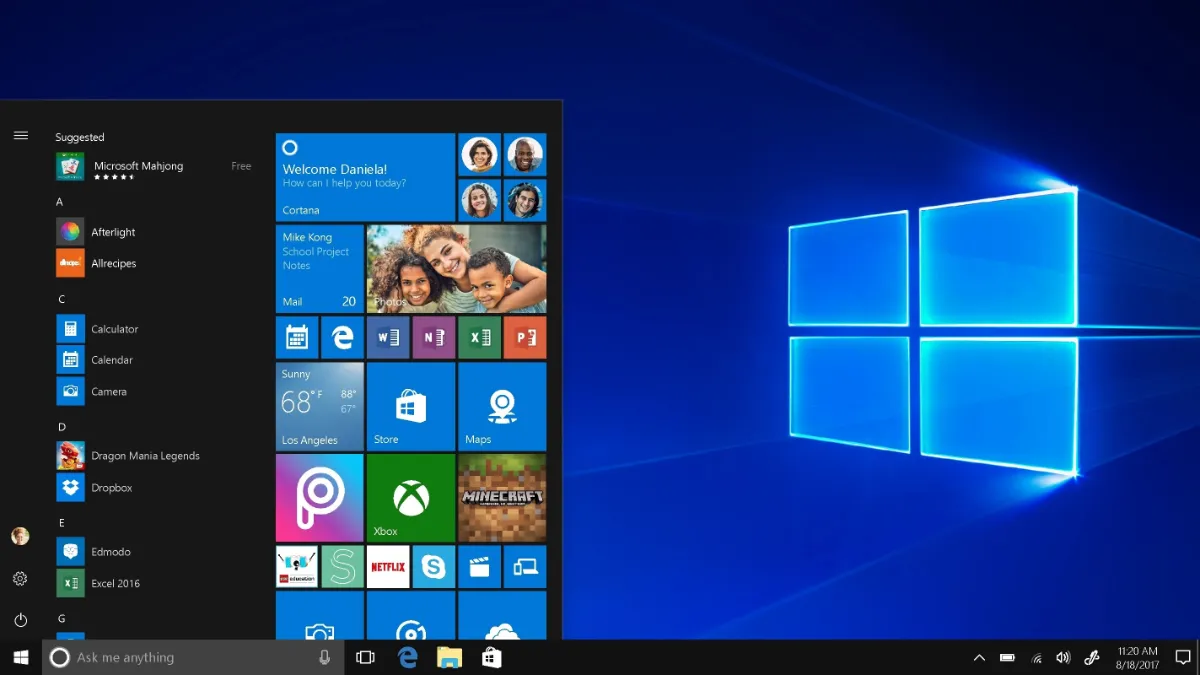Ranking Of All 12 Versions Of Windows; From Worst To Best
From Windows 7 Or 95 To Windows ME, Each Has Its Fans, But Which Versions Of Windows Is The Most Powerful In The World?
In this article, we will rank all versions of Windows from the worst to the best, regardless of the age range of users, by examining Microsoft’s strengths and weaknesses, as well as wins and failures.
12th Rank – Windows ME
The decision to assign the title of the worst version of the Windows operating system is not so easy. However, we chose this title for Windows ME. Microsoft’s Windows ME failed on almost all of its promised features despite its excellent initial targeting. This version of Windows only lasted a year, after which Microsoft introduced the lovely Windows XP.

Windows ME (Millennium Edition) was the last MS-DOS-based Windows operating system released on September 14, 2000, for home users. However, Microsoft limited the user’s access to the DOS environment in Otorove and shortened the system startup time.
This caused the user to benefit from the improvements in the Windows NT kernel (the main Windows kernel for workstations and network computers), which later became Windows XP. formFormedmain is deprived and does not have access to the capabilities of the DOS environment.
Windows ME is the worst version of Windows that bears the nickname “the wrong version of Windows.”
Windows ME was an interim version of Windows that came out between the release of Windows 98 and Windows XP, but it had poor driver support and was very unstable, so it could crash many times after booting up.
Microsoft tried to do some innovative actions for Jeran Maffat: releasing automatic security updates, native ZIP support for compressing folders and intranet, and producing a new Help and Support system to simplify the troubled process ever because the core of the operating system did not perform smoothly and propcorrectlyne of Microsoft’s efforts were effective.
11th rank – Windows 8
The development of Windows 8 was considered essential for Microsoft, but it failed to gain much attention. This version of Windows was released on October 26, 2012, as a replacement for Windows 7. Microsoft’s goal in developing Windows 8 was to change the user interface for touch gadgets to meet tablet users’ needs, moving the start menu and presenting the start screen instead of the desktop environment, along with extensive changes and the combination of desktop and tablet user interface elements, can be identified as the most important reasons for Microsoft’s failure in presenting Windows 8.
Windows 8 was the first version of this operating system after Windows 95, which did not have a start menu and was instead equipped with a new screen for touch gadgets. This screen, called Live Tiles, uses square or rectangular tiles to display tools and applications.
This dissatisfaction caused Microsoft to release another version of the same Windows under the rows 8.1, in which the taskbar and start menu were returned. Microsoft also tried to encourage gamers to stay on the platform by keeping DirectX11, but all these decisions were panacea that did not work.
10th rank – Windows Vista
Perhaps most of you consider Windows Vista the theorist version of this operating system, but its appearance ranks it ten on your list. Inflows, Vista was released five years after the previous version, windows XP, which is the longest time between the release of the two versions of Windows.
Microsoft first called this version of Windows Longhorn, and after development and completion, it was finally released under the name of Vista on January 30, 2007, on its official website. fiv we tw.
Windows Vista was incompatible with older drivers, and almost all companies were forced to release new drivers for their programs, making the Vista version of Windows a nightmare for programmers. In addition, the widgets of this Windows were not welcomed as they should be, and the new pop-ups did not find favor.
The only positive point of Windows Vista can be the semi-transparent Aero design language. Compared to the Windows XP design, Aero was more modern and had a transparent glass theme. This design was later used in Windows 7, and even Apple was inspired to design the Leopard Mac operating system.
The Aero design language can be considered an upgrade path for future user interface design. However, Windows Vista is regarded as one of the worst versions of the Windows operating system, which was too new for its time, and few people have good memories of it.
Ninth rank – Windows 1.0
Windows 1.0 was the first version of the Windows operating system on November 20, 1985. Maybe this version deserved to reach a higher position, but the fact is that Windows 1.0 was not an independent operating system at all. Windows 1.0 was a graphical environment that ran on the MS-DOS operating system.
Windows 1.0 can be seen as a great start for Microsoft’s new direction, which was supported for 17 years.
The. popularity of graphical user interfaces led Microsoft to introduce Windows 1.0 as a graphical user interface based on MS-DOS.
8th rank – Windows 2.0
Windows 2.0, like Windows 1.0, was a 16-bit graphical environment traduced on December 9, 1987, as a replacement for Windows 1.0.
This version of Windows did not succeed like Windows 3.0 or 3.1 and was still not competitive with the Macintosh operating system. Still, it comes with essential features compared to Windows 1.0. In this version, Microsoft added the ability to overlap and change the size of windows and support 16-color VGA graphics and desktop icons; instead of terms like “Iconize” and “Zoom” in Windows 1.0, the terms Maximize and Minimize are used.
The most important strength of Windows 2.0 was not the operating system itself but the programs that came with it. Windows 2.0 was packed with practical applications, from calculators and calendars to Microsoft Word and Excel. Microsoft supported Windows 2.0 for 14 years until December 31, 2001.
Seventh rank – Windows 95
Windows 95 was the operating system that determined the appearance of Windows for decades to come. In this version, Microsoft introduced the iconic Start menu and placed applications in submenus for easier segmentation and organization of the visual interface.
Windows 95 was a huge change compared to the MS-DOS environment, and the graphical interface of this version opened new doors for game and application developers.
Microsoft unveiled Windows 95 on August 24, 1995, and for the first time, it surpassed the Macintosh operating system in terms of performance.
Windows 95 had many bugs fixed with the release of Windows 98t. Still, this version introduced many of today’s desktop standards to the world and was Microsoft’s most popular operating system for a decade.
Windows 95 had about 60% of the computer market until the late 1990s. The most prominent features of Windows 95 used today are the taskbar, more efficient management of files, more shortcuts for the keyboard, and a more modern desktop.
Sixth rank – Windows 98
Windows 98 was released on June 25, 1998, as a replacement for Windows 95 and fixed bugs. This version of Windows was the first operating system that supported USB and DVD and had a standalone browser (Internet Explorer).
Windows 98 was well received after its release. Its second version, Windows 8 SE (abbreviated as Second Edition), became more popular a year later with many bug fixes and user interface optimizations.

Flows 98 was the first Windows that introduced a clean Internet Explorer (4.0) aversion and the ability to share the Internet connection. Despite dependence on the MS-DOS kernel, it was a start to eliminating the Command Prompt’s limitations.
In addition, Windows 98 hosts some of the most well-known games of the decade; Games like Age of Empires, HalfHalf-Life, and Unreal made this version of Windows the top desktop gaming platform.
At that time, users were a little upset about the sale of Windows 98 as an independent operating system because they considered this version to be an improved version of Windows 95. However, Microsmanifolds sold millions of copies of this version and finally stopped supporting it after eight weights.
Fifth place – Windows 11
Windows 10 was supposed to be the “last version of Windows” b” in June 2021; Microsoft officially unveiled a new version called Windows 11 as an evolved version of the previous Windows.
It may be too early to judge the latest version of Windows, but this version already has many fans due to its simplicity and high speed of operation. The bold changes of Windows 11, such as the redesign of the start menu and the taskbar, might cause this version of Windows to suffer the same fate as Windows 8, But this did not happen.
Windows 11, despite all the many innovations, can be considered a very significant version of Windows 10, in which some of the old interfaces of Windows 7 have been removed and offer a more inconsistent and engaging user experience to Windows 11; you can run multiple versions of your desktop at simultaneously switch between them for more productivity.
In addition, Microsoft also supports Android apps in this version of Windows, and it is also possible to download from other stores, such as Epic Games.
Although gamers are used to Windows 10, Windows 11 is trying to tempt them with some features such as more optimization for running games in windowed mode, suspend ort for AutoHDR, and Diredirect storage specifications required to install Windows 11 are almost the same as Windows 10, except that Windows 11 only supports 64-bit systems; Windows 11 currently requires at least 4GB of RAM and 64GB of storage.
It may take years for Windows 11 to replace Windows 10, but if the adoption rate continues to rise, we can hope that this version of Windows will one day be recognized as the best version of Microsoft Windows. Of course, provided that Microsoft does not release a new version of Windows until then.
Fourth place – Windows 3.1
Microsoft introduced Windows 3.1 in April 1992 to compete with Apple, two years after the release of Windows 3.0, by fixing graphics problems and disbanding laying fonts and multimedia files.
This version attracted the attention of many people and made companies show interest in using Windows in addition to the regular version.
In this version of Windows, Microsoft has improved the fonts for creating content and unveiled the shortcuts Ctrl+C (for copying), Ctrl+X (for cutting), and Ctrl+V (for pasting) for the first time in this Windows.
In addition, Windows 3.1 was equipped with tools such as Screen Saver and Media Player, and the two games Solitaire and Minesweeper were also installed on it by default.
Microsoft sold more than 3 million copies of Windows 3.1 in the first three months of its release. This success paved the way for the introduction of Windows 95 3 years later; Microsoft officially supported this version of Windows 9 eyeliners.
Third place – Windows 10
Windows 10 was introduced on September 30, 2014. This version of Windows is considered the “most comprehensive software platform” available on any device, from smartphones to tablets and computers, in an integrated manner. According to Microsoft, Windows 10 was supposed to be the last version of the Windows operating system.
This version of Windows is available in different models such as Home Edition for home users, Pro Edition for more advanced users, Enterprise Edition for businesses, Gaming Edition, and a model compatible with phones. Was Wassented.

All these models were equipped with a virtual desktop, Windows Defender to secure the user environment, Windows Hello security system, and Microsoft’s virtual assistant (Cortana).
Microsoft introduced Windows 10 after the failure of Windows 8. After the wave of user dissatisfaction, this version of Windows made a gentle slope to return the pleasant experience of working with Windows 7 to the user.
Second place – Windows XP
Windows XP is one of the most popular versions of Windows that was introduced on October 25, 2001 und, er the code name “Whistler.” While developing this version of Windows, many Microsoft employees worked at Thistle ReResortCanada.
Windows XP was developed on the core of Windows NT and 2000 and was initially launched with two home and professional users. This version of Windows also supported the language. With the help of this version of Windows, Microsoft introduced millions of people to the World Wide Web and provided the possibility of communication between thousands of popular chat programs.
AmonWindows XP has the most iconic appearance among the versions of the Windows operating system, Wind from the green start button to the Rolling Hills wallpaper that reminds us all of Windows XP.
In addition, this version of Windows was equipped with default programs such as Windows Media Player, Windows Movie Maker, and Care.
Windows XP only supported 32-bit processors and, therefore, could not use more than 4 GB of system RAM, and when 64-bit processors were released, the version of Windows was limited.
Although the life of Windows XP was only 13 years, in January 2008, Microsoft did not allow it to be installed on new computers, and users still use it on their computers.
First place – Windows 7
Windows 7 was introduced on October 22, 2009, for personal computers. This version was the seventh generation of Windows operating systems that Microsoft supported for 11 years.
Some believe that Windows 7 is a modified version of Windows Vista that was developed to fix its problems. However, the seventh version of Windows appeared beyond a simple modification; Windows 7 was fast and responsive and offered significant visual improvements over previous versions of Windows.
It was very compatible with old hardware and software, and it uses valuable features that are still considered among the main foundations of Windows.
Some of these features include improved touch interaction and handwriting recognition, support for Virtual Hard Disk, improved performance on multi-core processors, improved operating system kernel, and high speed of installation and setup.
In addition to the more extraordinary ability of Windows 7, the possibility of drag and drop was also added to Windows Media Player in this version of Windows, and the ability to convert units in the calculator was improved. These features were not seen in previous versions.
Wi.dows 7 required 1GB of RAM to install and was more expensive than previous versions; however, Microsoft still supported it and modern hardware, so many users would probably still be using it today.
What do you think about different versions of Windows? Which version is more beneficial to you? How do you rate these 12 versions?


